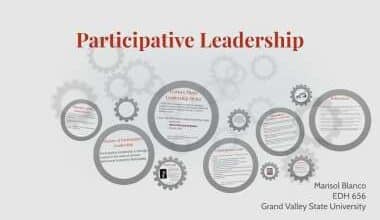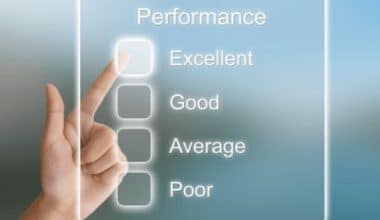As HR processes develop, adapt, and evolve, workforce management has become a mammoth task. Employee scheduling, attendance tracking, leave management, onboarding, benefits administration, call center optimization, HRIS, time tracking, and payroll systems are just a few of the features included in the best workforce management software.
In this article, I’ll go through some of the best, most dependable workforce management tools for everything from employee engagement to time and attendance management. I’ll also explain what each workforce HR software solution performs best so you can decide if it’s good for you.
Workforce Management Software: What Is It?
Workforce management software is a digital solution designed to help your human resources and workforce run smoothly on a daily basis. It assists managers in planning, tracking, and managing all aspects of staff operations, as well as handling basic HR management duties including timesheets, labor-management forecasts, performance management, absence management, task management, job scheduling, and so on.
What Are the Benefits of Workforce Management Software Tools?
Here are some ways that workforce management software can help your business.
#1. Improved Employee Experience
A workforce management software allows your employees to effortlessly handle everyday chores such as modifying personal schedules, confirming shifts, managing planned absences, clocking in/out, calculating payroll, and so on, resulting in a better overall employee experience. It also improves morale and increases employee engagement by increasing transparency across all departments and processes.
#2. Enhances Analytical Skills
To make the most lucrative decisions for the firm, HR managers need advanced tools. Workforce management software helps users to monitor real-time data, compare performance versus budget, measure business performance, and obtain insights into worker engagement, attendance, and productivity, allowing them to optimize staff training, coaching, and other operations.
#3. Remove Human Error
Manually performing activities increases the possibility of human error, resulting in lost time and higher disparities. Workforce management software eliminates the danger of human error and ensures a simple and orderly approach to meeting individual needs.
#4. Increased Productivity
Workforce management software frees up time spent each week (or day) on creating work schedules, allowing you to focus on the human side of HR inside the corporate setting.
Workforce Management Software’s Key Features
Some of the most frequent aspects of workforce management software include:
#1. Budgeting and forecasting
Workforce management software enables companies to optimize staff deployment and workload balancing as labor demands vary. Managers can utilize the forecasting feature to schedule staff for a given project based on past season performance.
#2. Monitoring of time and attendance
Tracking time and attendance with workforce management software uncovers attendance patterns and assists companies in forecasting and managing staff absences. Employees can also request time off through a single dashboard.
#3. Mobile compatibility
Workforce management software that is mobile-friendly enables managers to fill open shifts or make replacements instantly (through a smartphone or tablet) if a resource calls out.
#4. Reporting automation
Based on business data, workforce management software generates automated reports. This saves the HR team time wasted manually sending out these reports.
#5. Performance management
The performance management tool keeps track of each individual’s and the organization’s accomplishments. This study aids in performance appraisal, key performance indicator tracking, and workforce analysis.
#6. Integrations
Workforce management software can be integrated with other human resource systems to provide a comprehensive set of features.
Overviews of the Best 10 Workforce Management Software
Here’s a quick summary of each of the workforce management systems on my list, highlighting some of the capabilities.
#1. Papaya Global
Best workforce management reports and analyses
Papaya is a SaaS platform that offers an end-to-end global workforce management solution with cross-border payments in over 160 countries. The platform accommodates all employee alternatives (payroll, EoR, contractors), interfaces with common work management systems, and employs intelligent technologies to assure compliance and prevent errors.
With their unified automated payroll solution, Papaya simplifies multinational workforce management by eliminating spreadsheets and errors. They guarantee 100% local compliance.
Papaya develops a highly visible system for managing payroll expenses and providing real-time business analytics. You may gain insights into who your employees are—by country, cost centers, and more; discover how well you’re attracting and retaining top talent, as well as why they choose to leave; and clearly depict your company’s gender, age, and pay equity—by department and seniority hierarchy.
Papaya starts at $20 per employee per month and includes a free trial.
#2. ADP Workforce Now
Best workforce management software with time tracking tools incorporated
With over 70 years of expertise, ADP is a well-known and renowned HR software firm. ADP Workforce Now, a cloud-based HCM solution, combines fundamental HR tasks with payroll processing, time and attendance tracking, talent management, benefits management, performance management, a recruiting system, and hiring and onboarding capabilities. Their Workforce Now solution is intended for small to medium-sized businesses, but it may be expanded to one of their more powerful offerings as your business grows.
Their customizable time tracking and attendance module provides features such as automated alarms, overtime calculation guidelines, and timecard approvals. Employees can also use a smartphone app to view work schedules, switch shifts, request time off, or clock in and out using their geo-location. Their time and attendance feature also connects employee working hours to payment, avoiding a lot of superfluous (but typical!) administrative wrangling that your team would gladly abandon.
ADP Workforce Now is available in 140 countries and integrates with a wide range of popular software systems, including Absorb LMS, Avionte, ClearCompany, Clockshark, Deputy, Dolce, FinancialForce, Infor, JazzHR, Oracle, PayActiv, PlanSource, QuickBooks, Replicon, Sage Intacct, SAP SuccessFactors, Sapling, TempWorks, Wave, When I Work, Workday, Xero, ZipRecruiter
ADP starts at $160 per month for up to 49 employees and includes a 30-day free trial. When you sign up for payroll processing, you can presently get two months free.
#3. ClickUp
The best workload visualization tool for workforce management
ClickUp is a versatile productivity application well-known for project management and increasing team efficiency. They also provide various tools that can help firms with workforce management, such as a time estimate forecasting tool and Workload and Box views.
Because task tracking is a key component of ClickUp’s platform, it’s not surprising that you can be very specific with the specifics. In addition to tracking tasks, ClickUp allows you to set time estimates for each task, making it easier to predict how long they will take to complete. This is useful for both initial planning and continuing learning because the more you use the feature, the more accurate (or not) your time estimations will be. You’ll be able to enhance your forecasting predictions for comparable activities in the future with this information.
Workload and Box views also aid in workforce management by providing team leaders with a visual birds-eye perspective of what their team members are working on. The Workload view displays a timeline for each team member as a separate row, indicating how close they are to achieving their maximum capacity. The Box view, on the other hand, displays individual boxes for each employee, along with aggregated task and time estimate details. Both perspectives help to assist in improved decision-making when it comes to managing employee workloads and project schedules.
Apple Calendar, Clockify, Dropbox, Everhour, Google Calendar, Harvest, Microsoft Outlook, Microsoft Teams, Slack, Timely, TMetric, Toggl, and Zendesk are among the 45+ software programs that ClickUp integrates with natively. By linking ClickUp to a paying Zapier account, you can gain access to over 1,000 other apps.
ClickUp charges $5 per user each month and offers a free trial. They also provide a free unlimited plan for personal usage.
#4. SwipedOn Pocket
Best for location-based workforce management
SwipedOn Pocket is workforce and employee management software designed for on-site personnel tracking and risk-free environments. With the advent of SwipedOn Pocket, the tool can now explicitly aid with employee safety via capabilities such as contactless sign-in via QR codes. With proximity enabled, each employee sign-in is validated at a specific place, and the accurate date and time stamping provide a complete picture of who is on-site at all times.
Users of SwipedOn Pocket can add custom screening questions, allowing for daily health and wellness checks as employees sign in, and administrators can be notified if any answers raise concerns. SwipedOn Pocket is simple and easy to use, with a very clean, modern user interface.
Plans begin at $49 per month. The program also provides a 14-day free trial (no credit card required) and free demos with team specialists.
Pros
- Real-time data that accurately depicts employee movements
- Proximity enabled employees to sign in to specific places.
- During employee sign-in, do wellness checks by asking screening questions.
Cons
- There is currently no way to sign in remotely.
- Proximity is determined by the distance between iPad beacons, not by geolocation services.
- Older mobile devices are incompatible.
#5. Oracle Workforce Management
Best for mobile workforce management
Oracle Workforce Management combines time, labor, and leave management with payroll, financial, and human data in a single system solution. Managers will be able to traverse global absences while allowing for local customization, create rules and regulations, and track absence patterns and low employee productivity areas. They also have Oracle Mobile Workforce Management (MWM), a fully comprehensive smartphone app companion.
The platform, like all things Oracle, has a learning curve, but it is definitely worth investing time in to realize the whole feature set’s potential. You’ll have access to resources such as employee self-service compensation charts, profitability and cost management dashboards, and incident reporting made simple. Oracle has several first-party digital solutions that can manage the majority of your business demands without leaving the platform.
Oracle Workforce Management begins at $13 per user per month for a minimum of 1000 employees. They provide a free demo.
Pros
- Detailed insights on people management metrics
- Payroll processing requires automatic tax changes and IRS reporting.
- Learning outcomes and talent management on the cloud
Cons
- Few changes are permitted; all work must be done within the constraints of the configuration.
- Slow when retrieving specific reports
- It might be challenging to change benefits across departments.
#6. Fuse Workforce Management
Best for scheduling self-service
Fuse Workforce Management is a cloud-based human capital management (HCM) solution that includes a suite of management features, real-time workforce analytics, ACA compliance management tools, time-tracking and absence systems, and payroll. They have a marketplace of third-party tools for maximum customization. Their self-service workforce scheduling solution stands out because it is extremely user-friendly, mobile-friendly, and feature-rich. Change and PTO requests can be processed directly through the site.
Fuse WM’s cloud-based HR services to assist you in managing the whole employee lifecycle. To keep things moving smoothly, you can use administrative process automation, ready-to-use hiring, and training workflow templates, and applicant tracking solutions. They also include built-in notifications and alarms to indicate potential staff schedule difficulties.
Fuse Workforce Management starts at $18 per user per month and includes a free sample.
Pros
- Reports that are thorough and highly customized
- Timeclock, timesheets, and payroll are all centralized.
- The program is quite adaptable.
Cons
- Onboarding has a steep learning curve.
- The open enrollment procedure might be difficult to navigate.
- The attendance points system is not automatic and must be run manually.
#7. Workforce Management by BlueYonder
Best for remote workforce management
BlueYonder is a workforce management solution that prioritizes employee engagement and productivity. In today’s world, if you have a fully or partially remote workforce, you’ll want a modern, collaborative, user-friendly, and colorful platform like BlueYonder at your disposal. They have the slick user interface of modern workforce apps while also offering sophisticated capabilities like skill-based scheduling, volume forecasting, and extensive service reporting.
While most of the WMS on this list can manage remote teams to some extent, BlueYonder Workforce Management excels at it. They place a premium on multi-source analytics on a single dashboard, extreme user-friendliness for onboarding remote workers, and a strong data and document management solution built right into the platform.
On request, BlueYonder Workforce Management provides customizable pricing.
Pros
- Handles large amounts of transactions efficiently
- Personal information, payroll, and benefits are all accessible through the employee site.
- Strong digital fulfillment capabilities
- Excellent Microsoft Teams integration
Cons
- Integration and label printing necessitate a professional setup.
- Google app version that is unstable
- Some interface pages are extremely cluttered and text-heavy.
#8. Alvaria Workforce Engagement Suite
Best workforce management dashboard
Alvaria (previously Aspect Workforce Management) is a workforce management solution that offers omnichannel workforce planning, endless staffing “what-if” scenarios, and simple employee self-service capabilities. It is backward compatible with the vast majority of popular ACDs and routing solutions. As seen in the screenshot, Alvaria features a great dashboard setup with important and varied information provided in an easy-to-read fashion.
The dashboard color system is a little jarring, but the huge knowledge base it samples is smart, actionable, and one-of-a-kind. You can initiate and track engagement and performance challenges, as well as examine prizes and other reward systems and select which data widgets to display where. They have a method for tracking shift-changing instances as well as sign-in times.
On request, Alvaria Workforce Engagement Suite offers customized pricing. They provide a free demo.
Pros
- Tracking agent availability in real-time
- Simple bulk shift scheduling and quick scheduling modifications
- Can compare planned timetables to forecasts
- The ability to arrange breaks based on call volume
Cons
- The mobile app interface seems a little antiquated.
- There is no method to batch-delete requests from the inbox.
- Inadequate integration with non-aspect phone systems such as Avaya and Cisco.
#9. SAP SuccessFactors
Best healthcare workforce management software
SAP, which stands for “Systems, Applications, and Products in Data Processing,” was founded in Walldorf, Germany in 1972. Initially focusing on enterprise resource planning, they have expanded into workforce management, including capabilities for employee development and internal promotions. According to their website, 7 of the world’s top 10 hospitals presently utilize SAP for workforce management, where continual learning and lateral movement is especially beneficial.
SAP SuccessFactors can natively link to a wide range of SAP digital product solutions, including financial planning systems, accounting, supplier management, and core HR and payroll. This is great for customer-centric healthcare solutions that might benefit from improved vendor management, if for no other reason than data protection.
SAP SuccessFactors offers solutions starting at $2.18/user and software packages beginning at $1000+/package. The tool provides a free trial period.
Pros
- Excellent reward and recognition
- Effective career path development tools
- A useful onboarding portal
Cons
- Administrative scenarios on the go
- There is no AI for sourcing candidates.
- Customized rating systems have limitations.
#10. SumTotal Workforce Management
The best workforce learning app
SumTotal Workforce Management gives you the flexibility to schedule your staff based on availability, expertise, and job. Managers will be able to use the platform to make drag-and-drop schedule changes, track availability and counts, and validate that certificates and training are up to date. They combine time and attendance, scheduling, and absence management into one platform.
SumTotal Workforce Management has an advanced training and learning management system that alerts users when they need to update or enhance their skill sets while keeping managers informed of progress. They provide learning management systems (LMS) for financial services, healthcare, public sector training, and manufacturing training.
On request, SumTotal Workforce Management provides customizable pricing.
Pros
- Gamification and self-motivated learning are both available.
- Excellent integration with third-party programs
- User-specific front-page layouts
Cons
- Their website does not include pricing information.
- Some further forms of customization are prohibited due to the SaaS status.
- More standard report formats would be greatly appreciated.
Is SAP a Workforce Software?
WorkForce Software is a SAP Solution Extension partner, which means that our complete WorkForce Suite works smoothly with SAP software, whether in the cloud or on-premise.
What is a Workforce Platform?
Workforce management solutions include a number of capabilities that allow users to optimize their workforce operations. Workforce management software is used by businesses to estimate labor demand, generate and allocate personnel schedules, track attendance, and report on workforce efficiency.
Conclusion
Every business, whether it is a multi-million dollar corporation or a small startup, can benefit from deploying workforce management software. It enables you to stay competitive, launch lean projects with fewer resources, and remove waste while meeting industry needs. Simply selecting the correct workforce management software for your business can make understanding and managing your workforce much easier and more streamlined.
Workforce Management Software FAQs
What is workforce planning in HR?
Workforce planning entails generating information, analyzing it to inform future needs for people and skills, and turning that information into a set of actions that will expand and build on the present workforce to satisfy that demand.
What are two types of workforce planning?
The two types of workforce planning are strategic and operational.
What is the role of a workforce manager?
A workforce manager is a professional whose primary tasks are to control a company’s productivity and work quality. They analyze and report on personnel to identify how their unique skills can best benefit the firm.
Related Articles
- Ways To Diversify And Upskill Your Workforce
- Leadership Team: Developing an Effective Workforce
- HUMAN CAPITAL MANAGEMENT (HCM): Types, Examples & Software Solutions
- Five Benefits of Using Employee Scheduling Software
- Top 6 Tips for Effective Workforce Management






